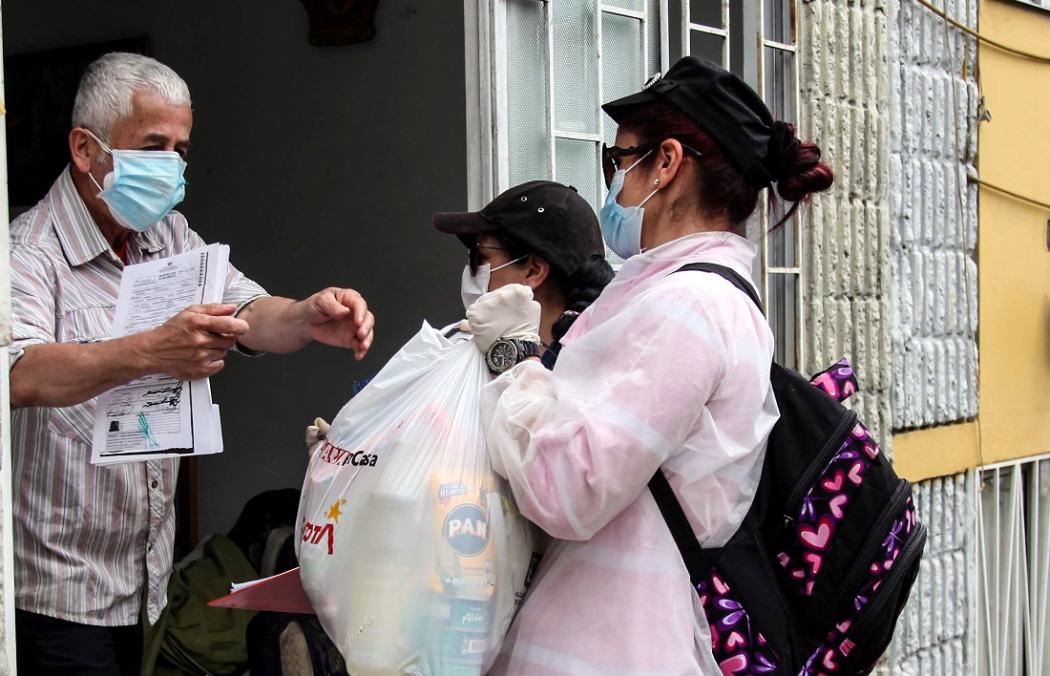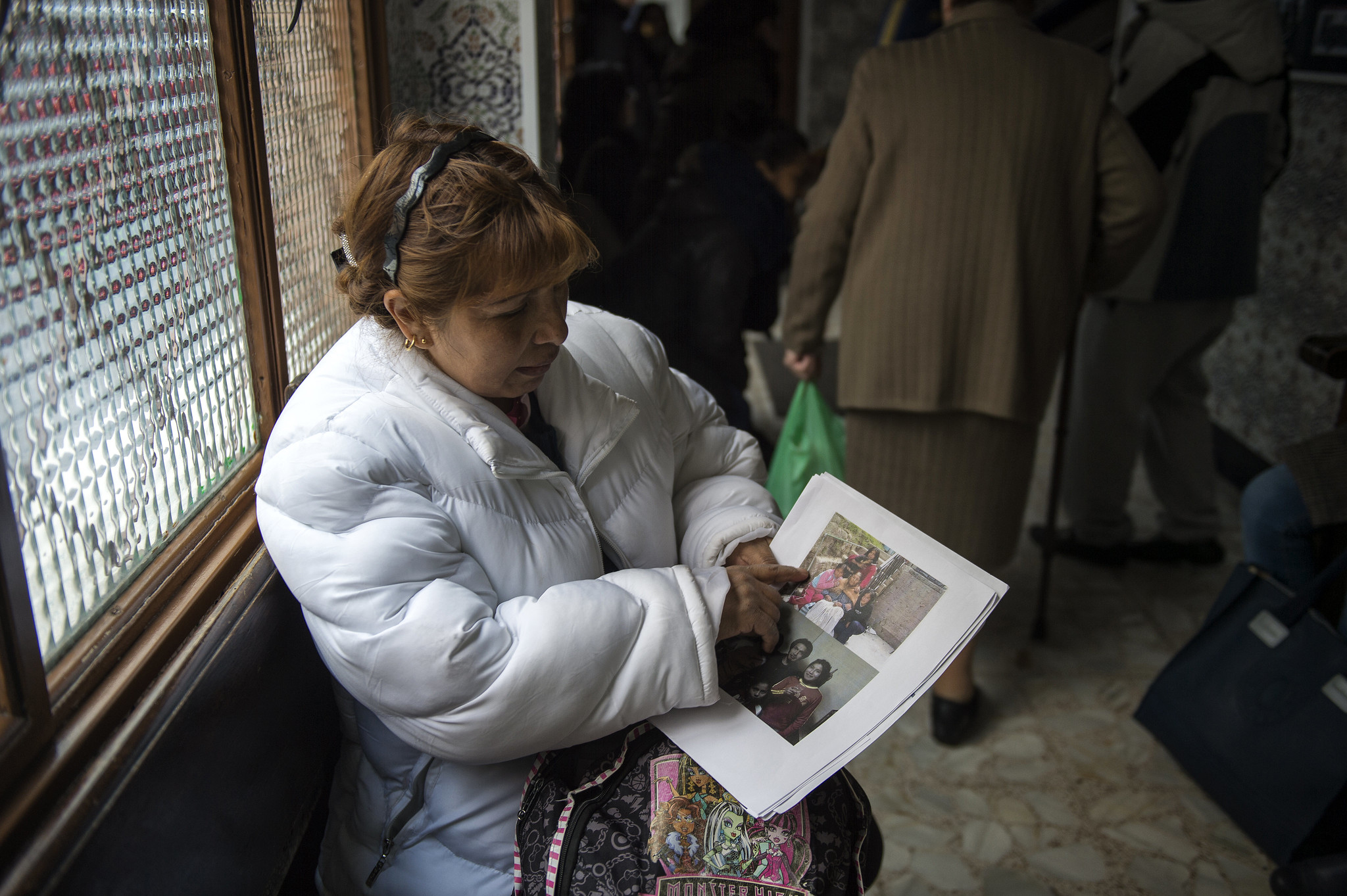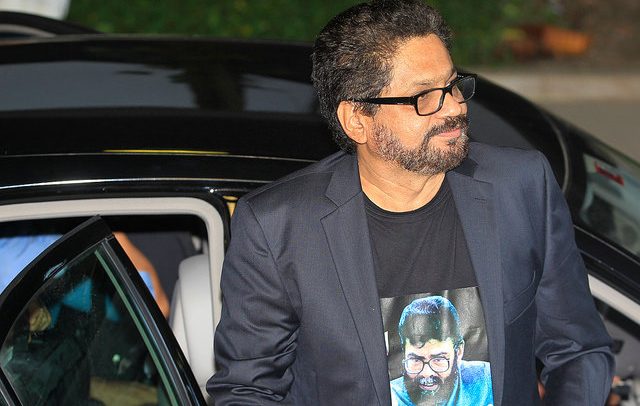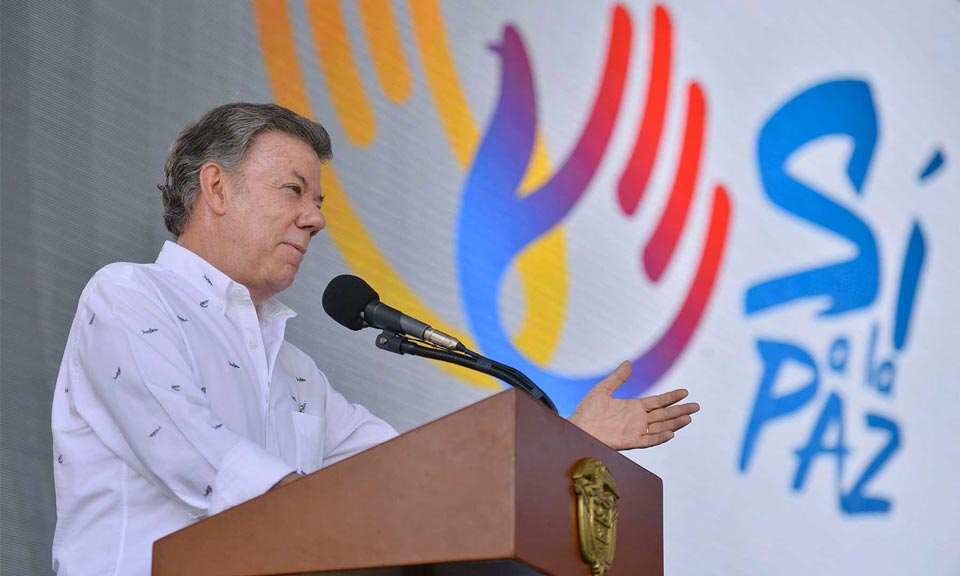
President Santos speaking after the announcement of the agreement wight he FARC. Photo: presidencia.gov.co
As negotiators in Havana make more irrevocable steps towards peace, Julia Lledín Vitos from the Comité Permanente por la Defensa de los Derechos Humanos (cpdh) breaks down the details
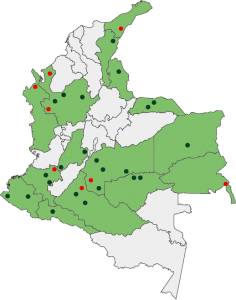
23 Transitional zones / 8 EncampmentsThe transitional zones are territorial, temporary and transient. These defined and delimited areas have previously been agreed between the national government and the FARC. There will be a local monitoring team headquartered in each zone, which will act as part of the overall mechanism for monitoring and verification. TRANSITIONAL ZONE – Contains various encampments |
|
|
|
|
|
The contents of the June 23 announcement

Announcement and dissemination
The agreement sets out a six month roadmap, beginning on the day that a full peace accord is signed (D-day). This will mark a full bilateral ceasefire and definitive end to hostilities.
Prior to any announcement, there will need to be sufficient time to set up the monitoring and verification mechanisms in the field.

Monitoring and verification
An essential mechanism for monitoring and verifying all aspects of the accord, both to build trust and to ensure compliance. The tripartite mechanism will be made up of representatives from national government (the armed forces), the FARC and an international component, primarily made up of observers from the UN and CELAC (Community of Latin American and Caribbean States).
The technical mechanism will work at several levels: one national structure, eight regional ones and various local monitoring posts.
This mechanism is key to monitoring and enforcing the strict rules and protocols that will ensure that the terms of the bilateral ceasefire and surrender of weapons are not violated.

Mechanisms in the field
23 transitional zones and eight camps will be created, where FARC members will begin the process of reincorporation into civilian life.
The proper functioning of the civil authorities and communities will be maintained.
There will be a safe area of 1km around each transitional zone.
The monitoring and verification mechanism will have a constant presence. Its operation will end on D-day +180.

Security
The security plan is based on principles of respect for life and human dignity for people and communities. To that end, the agreement contains detailed protocols to minimise threats both inside and outside the demilitarised zones, particularly relating to the movement of people and the handling of weapons and explosives. The armed forces will guarantee the safety of the civilian population throughout.

Logistics
Getting the logistics right will be essential in ensuring a smooth transition throughout the six month period – from organising the movement of FARC members and ensuring supplies reach the zones to securing compliance and tracking the disarmament process. Each local body of the monitoring and verification team will have a logistics section, coordinated by the international component.

Laying down of weapons
Abandonment of arms will take place in several stages. First a process of identification and registration – in which the monitoring group will build a full picture of what weapons the FARC has. Then comes collection and storage, before finally the removal and disposal/disassembling can begin.

Assurances against criminal organisations
As part of the security guarantees needed to assure the end of the conflict, the FARC and the government announced a series of protection measures to fight against criminal organisations and paramilitary activity that may threaten peace building. These include a National Political Pact against violence, the formation of a Security Commission to monitor public policy as well as a Special Investigative Unit aimed at dismantling criminal organisations.
By Julia Lledín Vitos

 Movement to the transitional zones
Movement to the transitional zones Preparation for reincorporation and the construction of peace
Preparation for reincorporation and the construction of peace Encampments in the transitional zones
Encampments in the transitional zones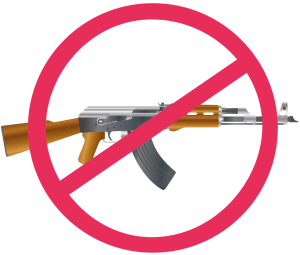 Laying down of weapons
Laying down of weapons Local authorities and communities
Local authorities and communities